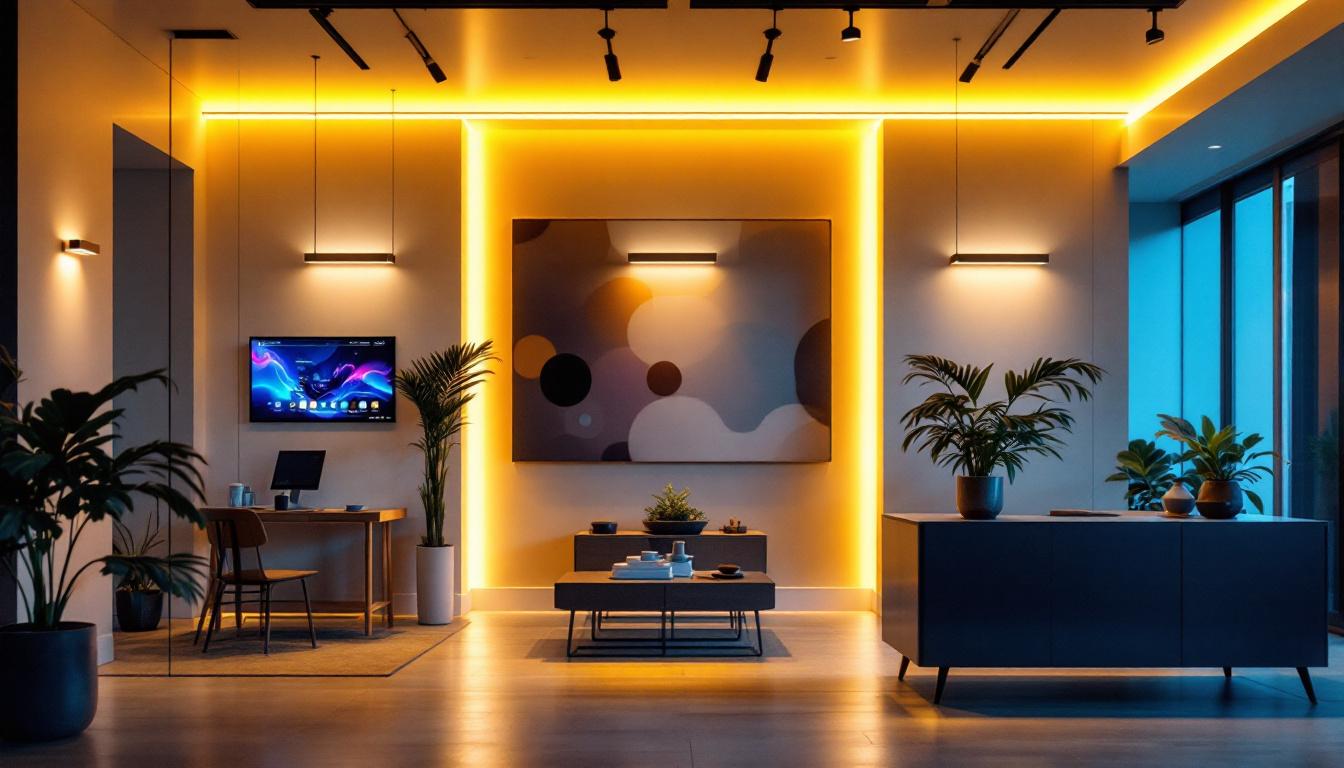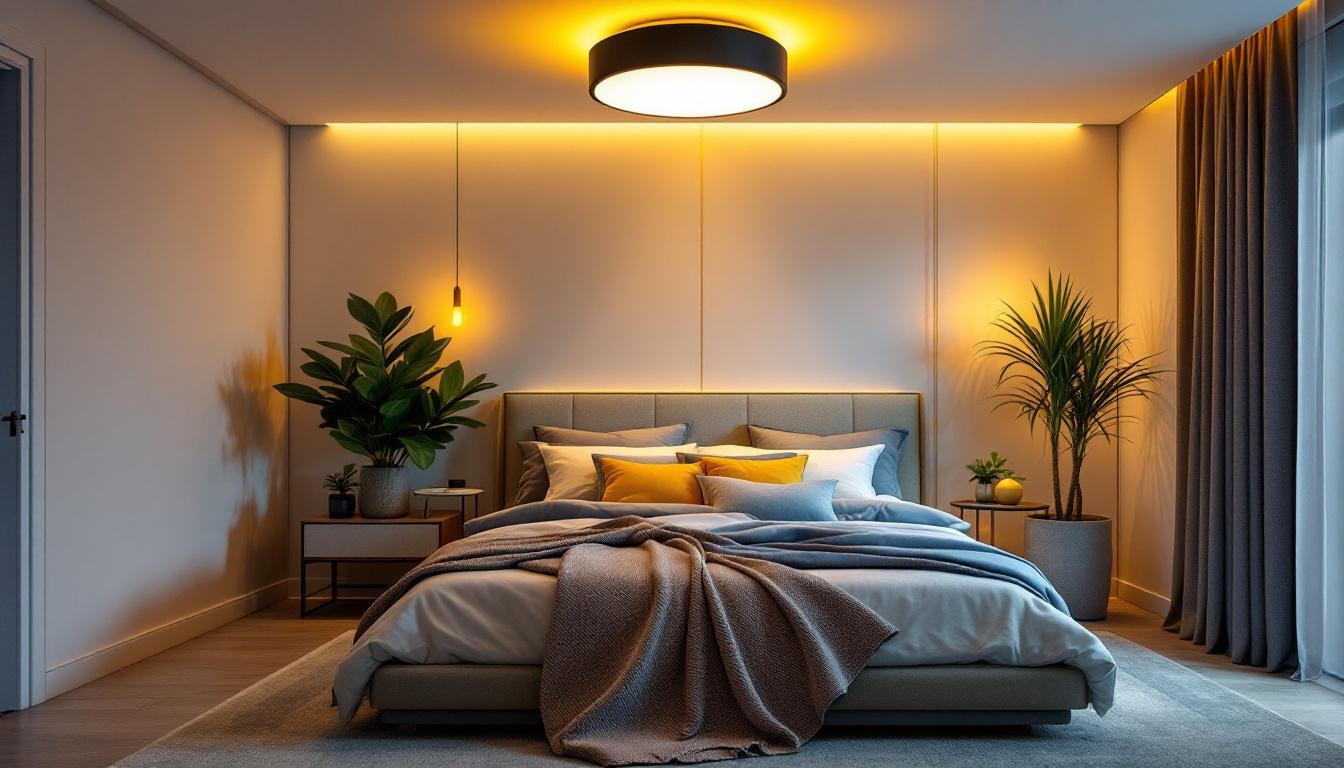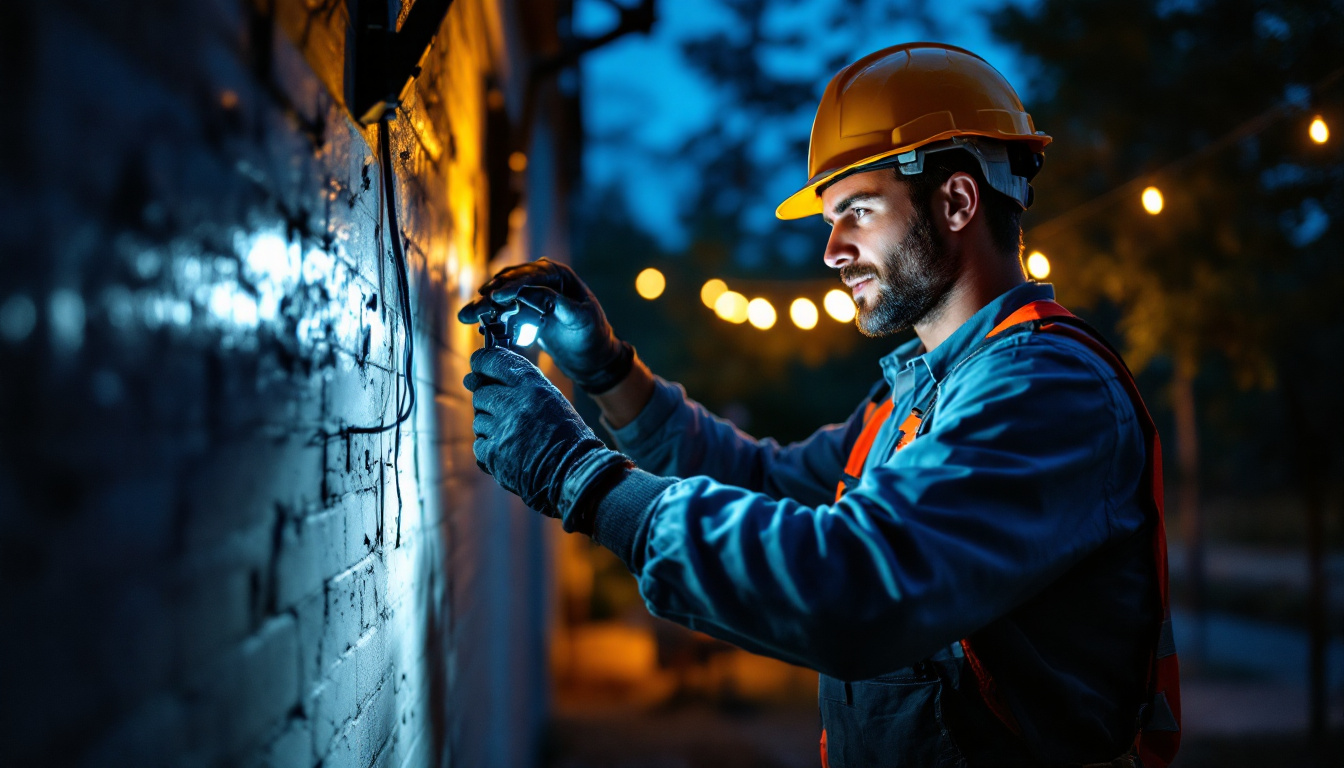
In an era where technology is evolving at an unprecedented pace, the field of lighting design and installation is undergoing a transformation that promises to redefine how spaces are illuminated. The integration of smart technology, sustainable practices, and innovative design concepts is paving the way for a future where lighting is not merely functional but also an integral component of architectural aesthetics and energy efficiency. This article delves into the future of lighting design and installation, exploring the trends and technologies that are shaping the industry.
Lighting design has come a long way from the days of simple incandescent bulbs. Today, it encompasses a wide range of technologies and design philosophies that prioritize both functionality and artistry. As the demand for more sophisticated lighting solutions grows, lighting designers are increasingly challenged to create environments that enhance the user experience while also being energy-efficient.
The transition from incandescent to LED lighting has been one of the most significant shifts in the industry. LED technology offers numerous advantages, including longer lifespan, lower energy consumption, and a wider range of color temperatures. This shift has not only reduced energy costs but has also opened up new avenues for creative expression in lighting design.
As LEDs become more versatile, designers are exploring their potential in various applications, from residential to commercial spaces. The ability to control brightness and color temperature allows for dynamic lighting schemes that can adapt to different activities and moods, enhancing the overall atmosphere of a space. For instance, in a restaurant setting, lighting can be adjusted to create an intimate ambiance during dinner hours, while brightening for a lively brunch scene. This adaptability not only improves the aesthetic appeal but also influences customer behavior and satisfaction.
The rise of smart technology is revolutionizing how lighting systems are designed and installed. Smart lighting systems enable users to control their lighting remotely through smartphones or voice-activated devices, providing convenience and flexibility. These systems can be programmed to adjust automatically based on time of day or occupancy, promoting energy efficiency and user comfort.
Moreover, the integration of smart lighting with other building systems, such as heating and cooling, creates opportunities for holistic building management. This interconnectedness not only enhances the user experience but also contributes to sustainability efforts by optimizing energy usage. For example, smart lighting can work in tandem with natural light sensors, dimming or brightening based on the amount of sunlight entering a room, thus reducing reliance on artificial lighting during the day. Additionally, the data collected from these systems can inform future design decisions, leading to even more efficient and user-centric environments.
As we look to the future, the potential for innovation in lighting design continues to expand. Emerging technologies such as human-centric lighting, which adjusts to support our circadian rhythms, are gaining traction. This approach not only improves well-being and productivity but also aligns with the growing emphasis on health and wellness in architectural design. By considering the psychological and physiological effects of lighting, designers are crafting spaces that not only look beautiful but also nurture the occupants within them.
As environmental concerns continue to rise, sustainability has become a central theme in lighting design. Lighting contractors are increasingly tasked with implementing solutions that minimize environmental impact while still meeting the aesthetic and functional needs of their clients.
Energy-efficient lighting solutions are no longer just a trend; they are a necessity. The adoption of LED technology has been a significant step toward reducing energy consumption, but there are other strategies that lighting designers can employ. For instance, incorporating daylighting techniques can significantly reduce reliance on artificial lighting. By maximizing natural light through strategic window placement and the use of reflective surfaces, designers can create bright, inviting spaces while minimizing energy use.
Additionally, the use of smart controls and sensors can help regulate lighting based on occupancy and natural light levels, further enhancing energy efficiency. These solutions not only benefit the environment but also reduce operational costs for building owners.
Sustainable lighting design also involves careful consideration of materials used in fixtures and installations. Choosing materials that are recyclable or have a lower environmental impact can significantly contribute to a project’s sustainability profile. Furthermore, understanding the lifecycle of lighting products—from production to disposal—allows designers to make more informed choices that align with sustainability goals.
Contractors can also advocate for products that are designed for longevity and ease of maintenance, reducing the need for frequent replacements and minimizing waste. This holistic approach to material selection can lead to more sustainable outcomes in lighting design.
The future of lighting design is not just about technology and sustainability; it is also about creativity and innovation. Designers are increasingly exploring unique concepts that challenge traditional notions of lighting and its role within a space.
Biophilic design, which emphasizes the connection between people and nature, is gaining traction in the realm of lighting. By incorporating natural elements and patterns into lighting design, contractors can create environments that promote well-being and enhance user experience. This might involve using fixtures that mimic natural light or incorporating organic shapes and materials into the design.
The psychological benefits of biophilic design are well-documented, with studies showing that exposure to natural light and organic forms can reduce stress and improve mood. As awareness of these benefits grows, more clients are seeking to incorporate biophilic principles into their lighting designs.
Adaptive lighting solutions are another exciting trend in lighting design. These systems adjust automatically to changing conditions, such as the time of day or the activities taking place in a space. For example, a conference room might feature bright, cool lighting during presentations and warmer, softer lighting during breaks. This adaptability not only enhances the functionality of the space but also contributes to energy savings.
As technology continues to evolve, the possibilities for adaptive lighting solutions will expand, allowing for even greater customization and responsiveness to user needs.
As the landscape of lighting design continues to evolve, the role of lighting contractors becomes increasingly crucial. They are not only responsible for the installation of lighting systems but also play a key role in educating clients about the benefits of modern lighting solutions and sustainable practices.
Effective collaboration between lighting contractors and designers is essential for successful project outcomes. Contractors bring practical knowledge and experience to the table, while designers provide the creative vision. By working together from the outset, both parties can ensure that the final installation meets both aesthetic and functional requirements.
Clear communication and a shared understanding of project goals can lead to innovative solutions that enhance the overall design. Contractors should be proactive in discussing potential challenges and offering insights that can improve the design process.
In a rapidly changing industry, staying updated with the latest trends and technologies is vital for lighting contractors. Regular training and professional development opportunities can help contractors remain competitive and knowledgeable about new products and techniques.
Attending industry conferences, participating in workshops, and engaging with professional organizations can provide valuable insights and networking opportunities. By staying informed, contractors can better serve their clients and position themselves as industry leaders.
The future of lighting design and installation is bright, driven by innovation, sustainability, and a growing understanding of the importance of lighting in our daily lives. As technology continues to advance, lighting contractors will need to adapt and embrace new methods and materials that enhance their offerings.
Artificial intelligence (AI) is poised to play a significant role in the future of lighting design. AI can analyze data from various sources, including user preferences and environmental conditions, to optimize lighting solutions in real-time. This level of automation can lead to unprecedented energy savings and improved user experiences.
For lighting contractors, understanding how to integrate AI into their projects will be essential. This may involve collaborating with tech companies or investing in training to develop the necessary skills to implement AI-driven solutions effectively.
As the focus on user experience continues to grow, lighting design will increasingly prioritize the needs and preferences of individuals. This user-centric approach involves not only aesthetic considerations but also the psychological and emotional impacts of lighting.
Lighting contractors will need to engage with clients and end-users to understand their needs better, ensuring that the final design enhances their experience. This might involve conducting surveys, gathering feedback, and being open to iterative design processes that prioritize user input.
The future of lighting design and installation is an exciting frontier, rich with possibilities for innovation and creativity. As lighting contractors navigate this evolving landscape, embracing technology, sustainability, and user-centric design will be key to their success. By staying informed and adaptable, contractors can not only meet the demands of their clients but also contribute to a more sustainable and aesthetically pleasing built environment.
Ultimately, the role of lighting in our lives is more significant than ever. It shapes our experiences, influences our moods, and can even impact our health. As the industry moves forward, lighting contractors have the unique opportunity to be at the forefront of this transformation, crafting spaces that illuminate not just our surroundings but also our lives.
As you embrace the future of lighting design and installation, let LumenWholesale be your trusted partner. We provide contractors with the highest quality, spec-grade lighting products at unbeatable wholesale prices. Our commitment to cutting out the middleman means you get superior lighting without the inflated markups, ensuring every project shines with excellence and efficiency. With our extensive selection that meets rigorous industry standards and the convenience of free shipping on bulk orders, you can confidently equip your spaces with premium lighting at the best value. Elevate your lighting installations today by visiting Wholesale Lighting at the Best Value and discover how we can brighten your projects while optimizing your budget.

Discover why purchasing stairway and corridor lighting in bulk from local distributors might not be the best choice.

Discover how Alibaba Lighting is revolutionizing the industry by enhancing efficiency for lighting contractors.

Discover expert insights with our quick tips from lighting contractors on choosing the perfect bedroom flush mount light.

Explore effective strategies for lighting contractors to tackle common challenges with LED flood lights.